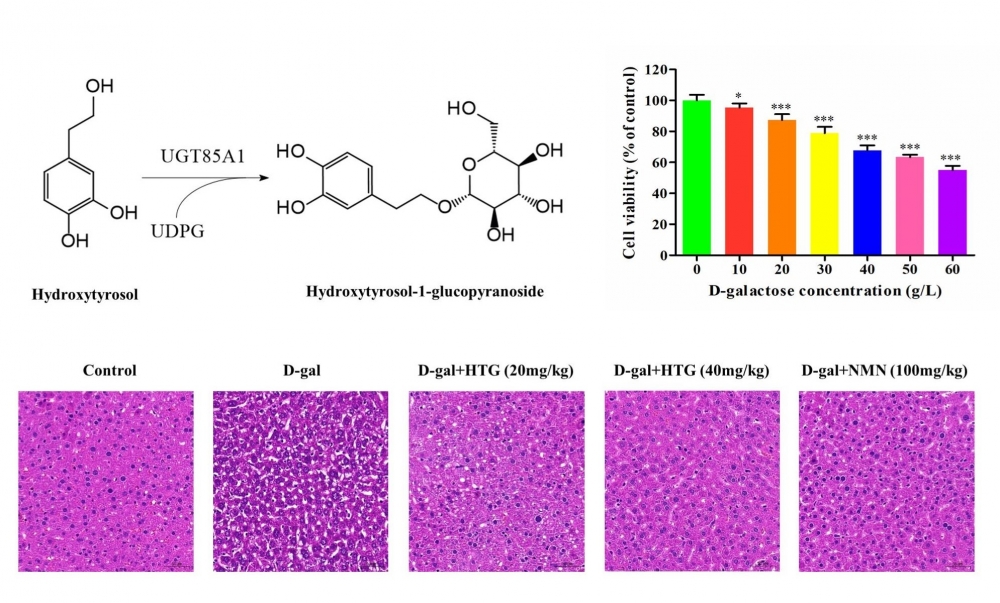JOURNAL 3166
Records of Natural Products
Year: 2024 Issue: 4 July-August
p.405 - 418
Viewed 2059 times.
-
Yang Guo

-
Bo Zhang

-
Yongzhi Han

-
Waleed Iqbal Muhammad

-
Jia Wang

-
Xiaolin Shen

-
Hao Liang

-
Xinxiao Sun

-
Qipeng Yuan

GRAPHICAL ABSTRACT

ABSTRACT
Hydroxytyrosol-1-glucopyranoside (HTG) is a natural phenylethanol glycoside with promising anti-aging properties. In this study, we established a biotransformation and purification process to effectively prepare high-purity HTG. We constructed E. coli strains expressing the glycosyltransferase gene UGT85A1 and UDP-glucose enhancing genes pgm and galU. By optimizing gene expression, the best strain produced 6.8 g/L HTG at 48 hours in fed-batch fermentation. Among the five different macroporous resins tested, SP825L performed the best and was employed to purify HTG from the culture broth. By optimizing the adsorption and desorption conditions, the purity and the recovery percentage reached 81.7% and of 82.4%, respectively. The purity was improved to 95.2% by further purification through preparative chromatography. The anti-aging effects of HTG were evaluated in both cells and mice. The results demonstrated its capacity to enhance cellular antioxidant capacity, reduce apoptosis, and decrease the release of senescence-associated secretory phenotype (SASP), effectively mitigating D-galactose-induced cell senescence. The potential mechanism of action suggests that HTG activates the AMPK and Nrf2 signaling pathways to protect mice from liver injury. This study suggests promising application of HTG in cosmetic and nutraceutical fields.
KEYWORDS- Antioxidant
- anti-aging
- macroporous resin
- hydroxytyrosol-1-glucopyranoside